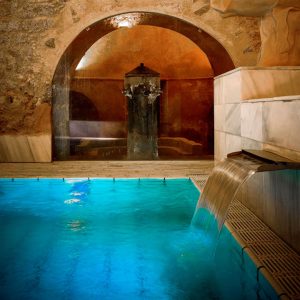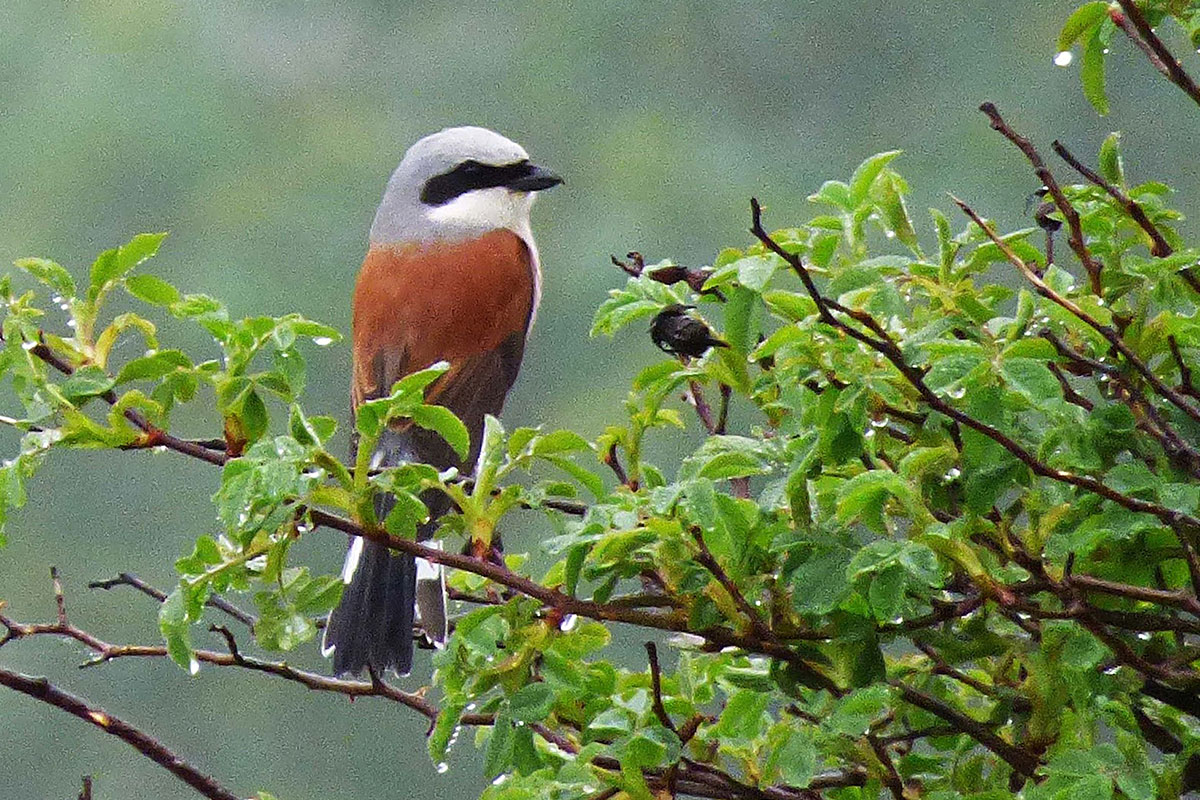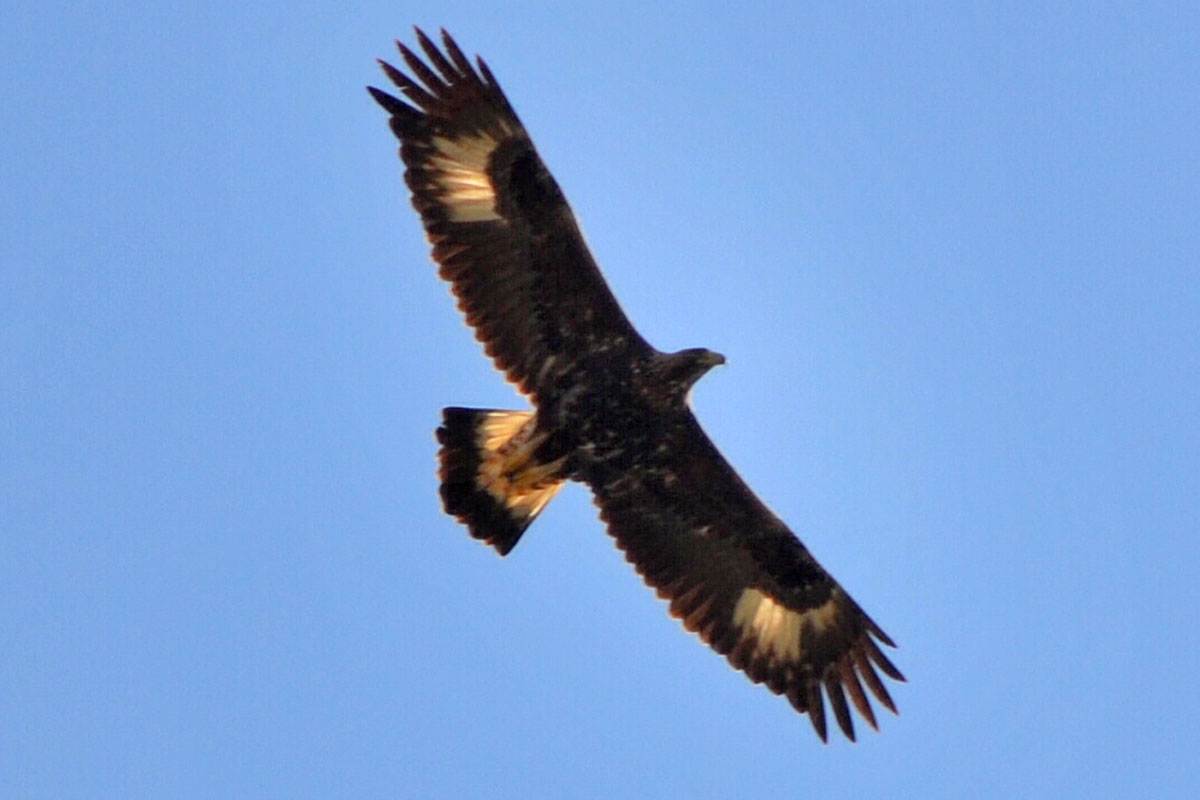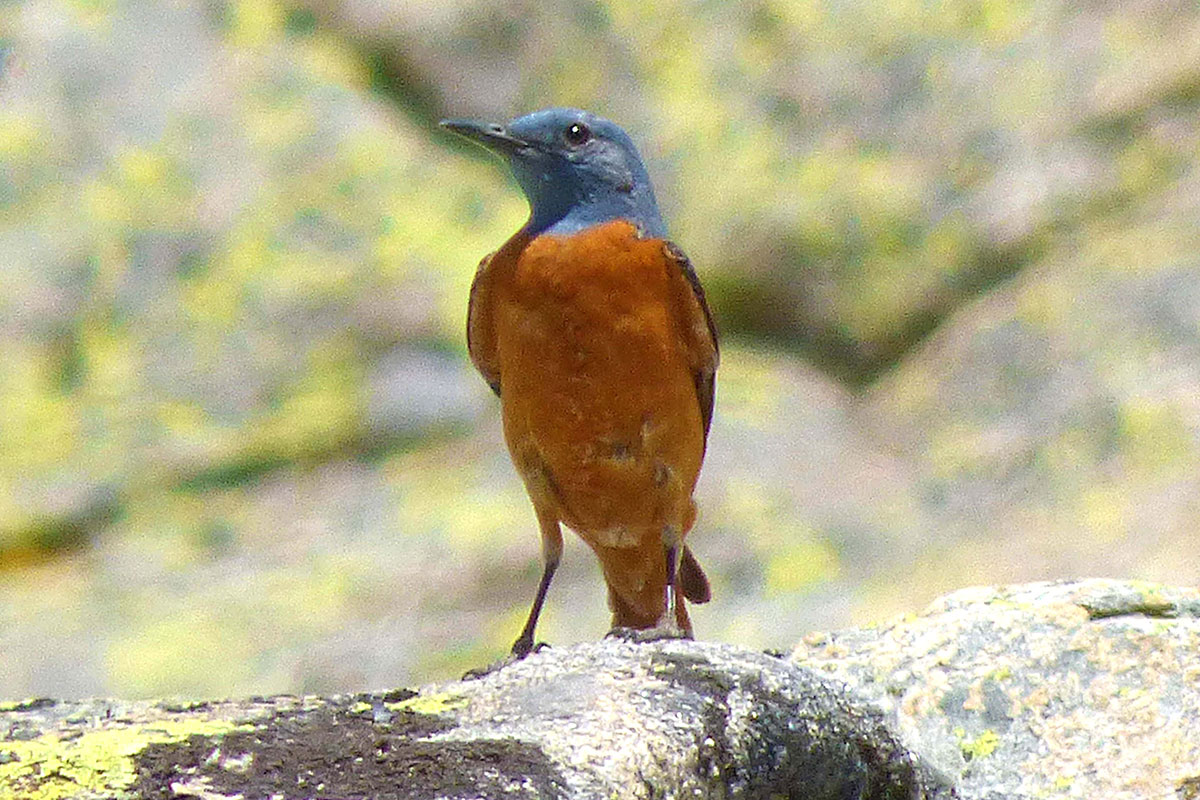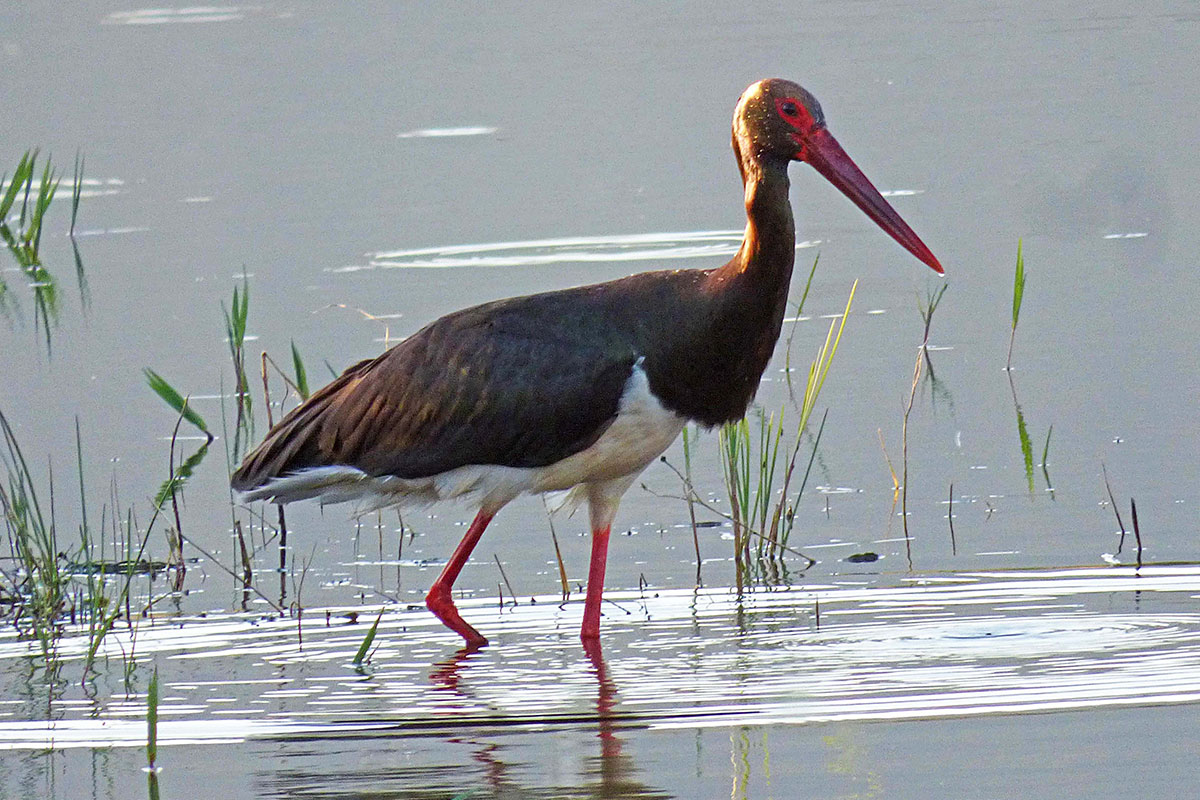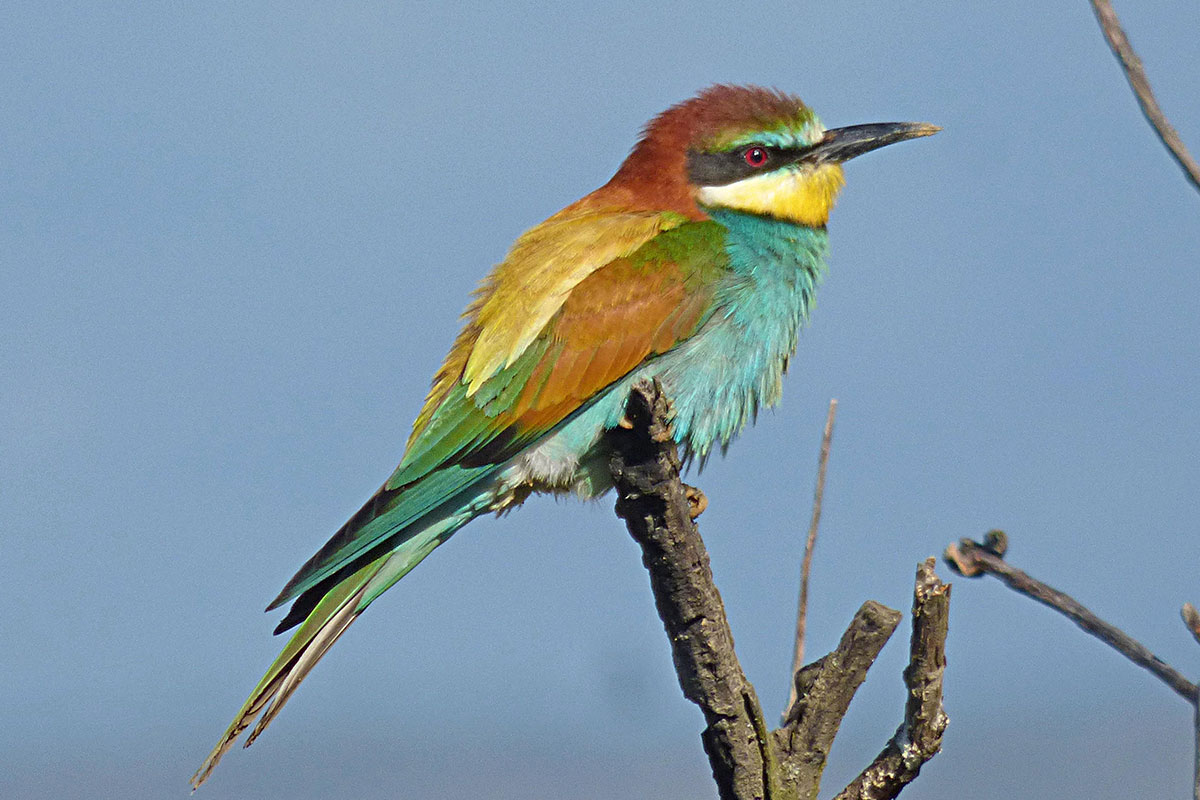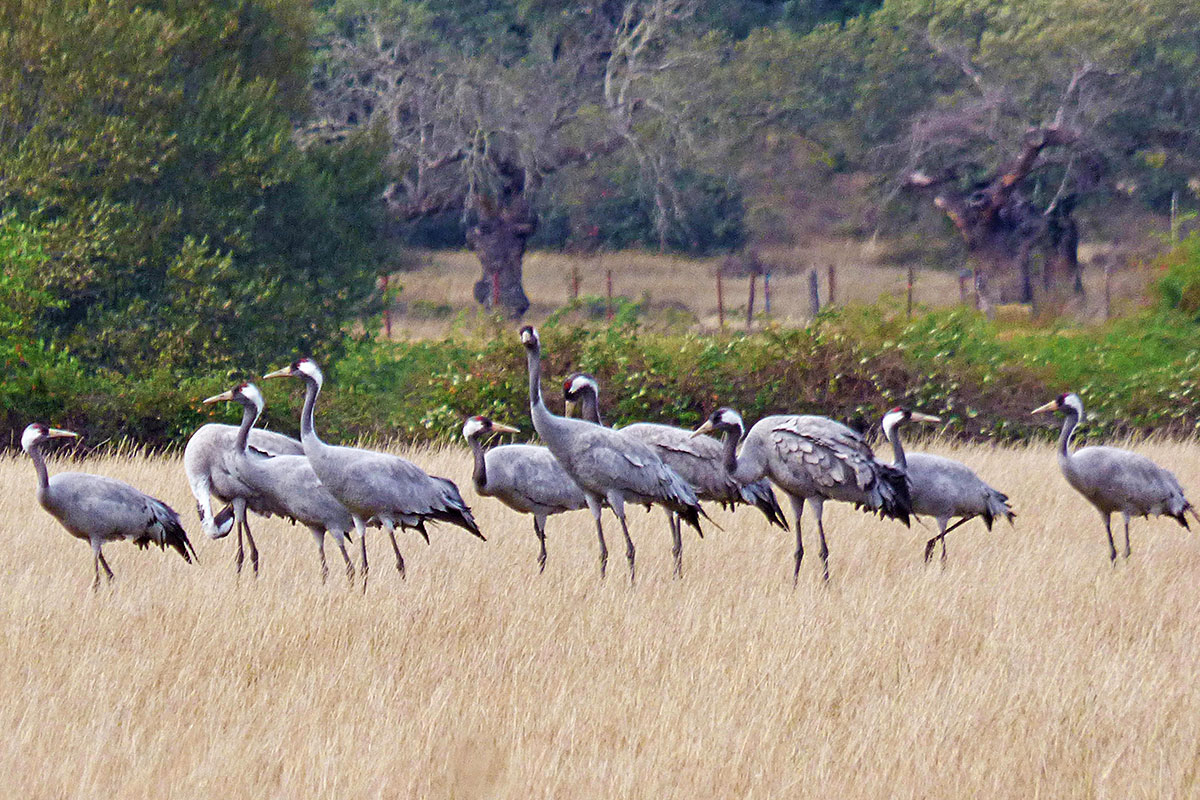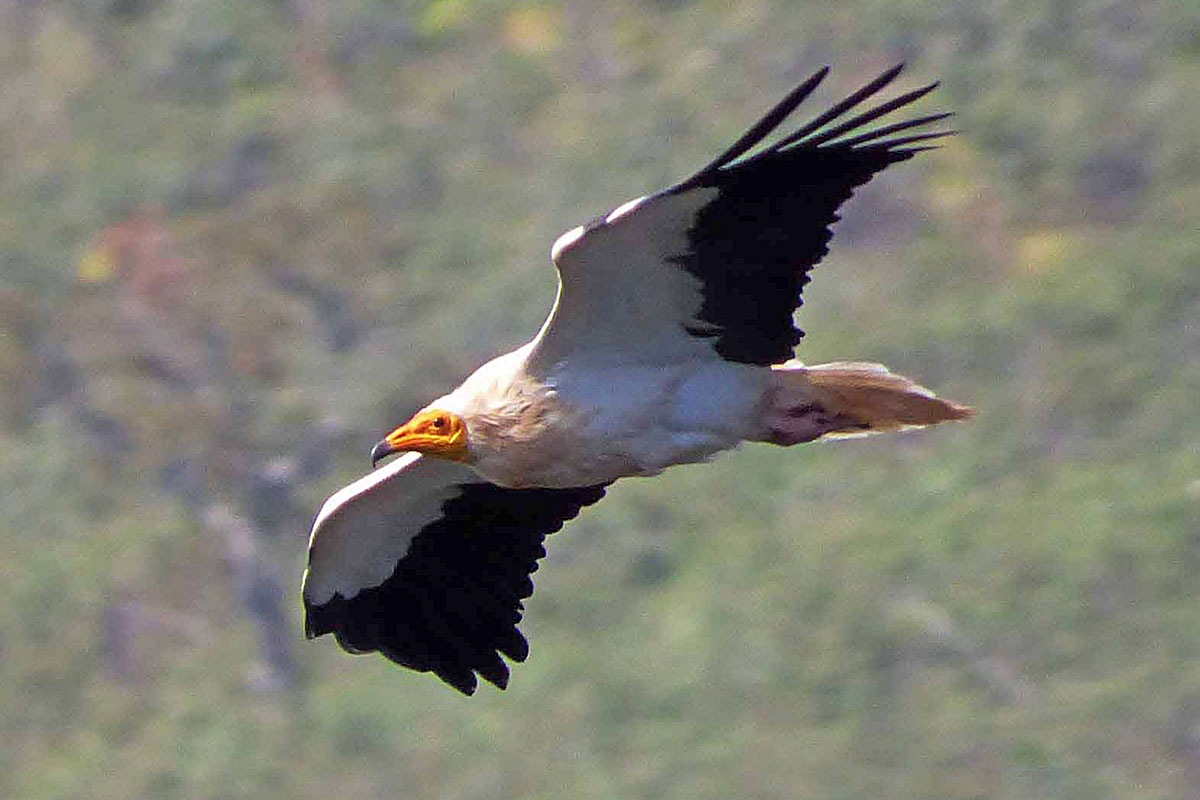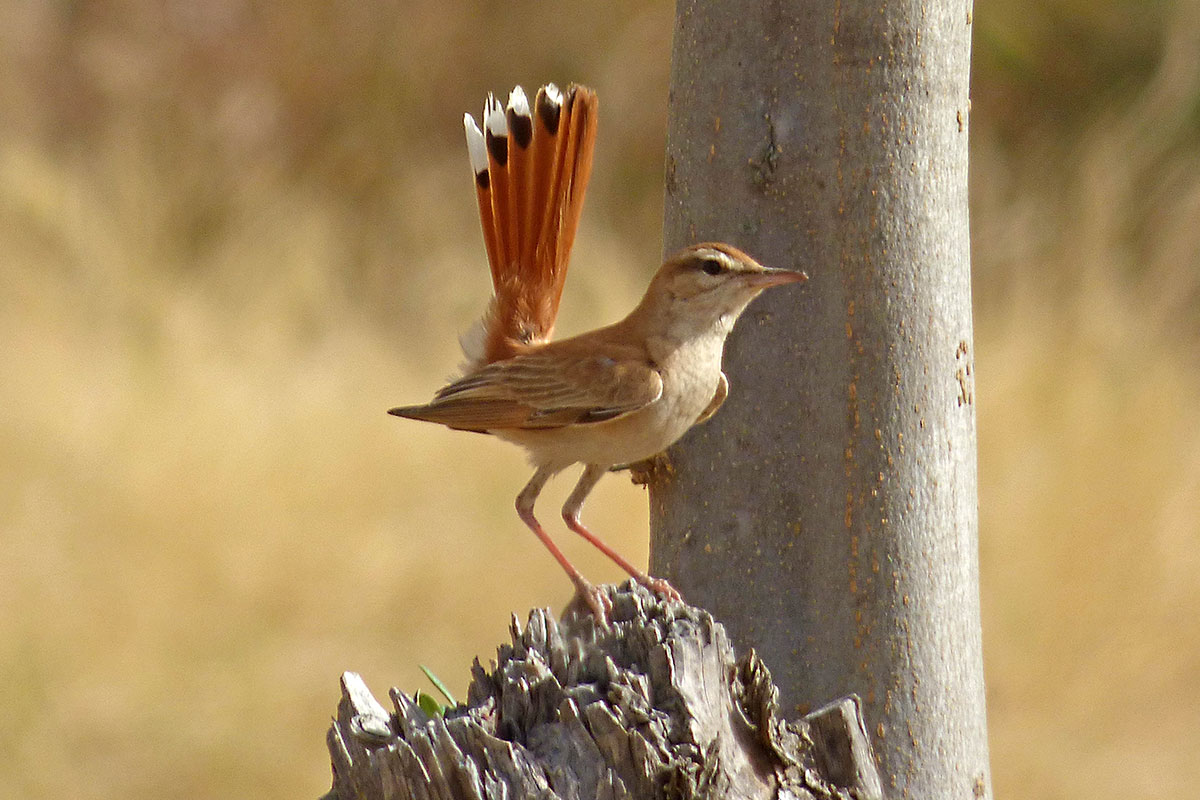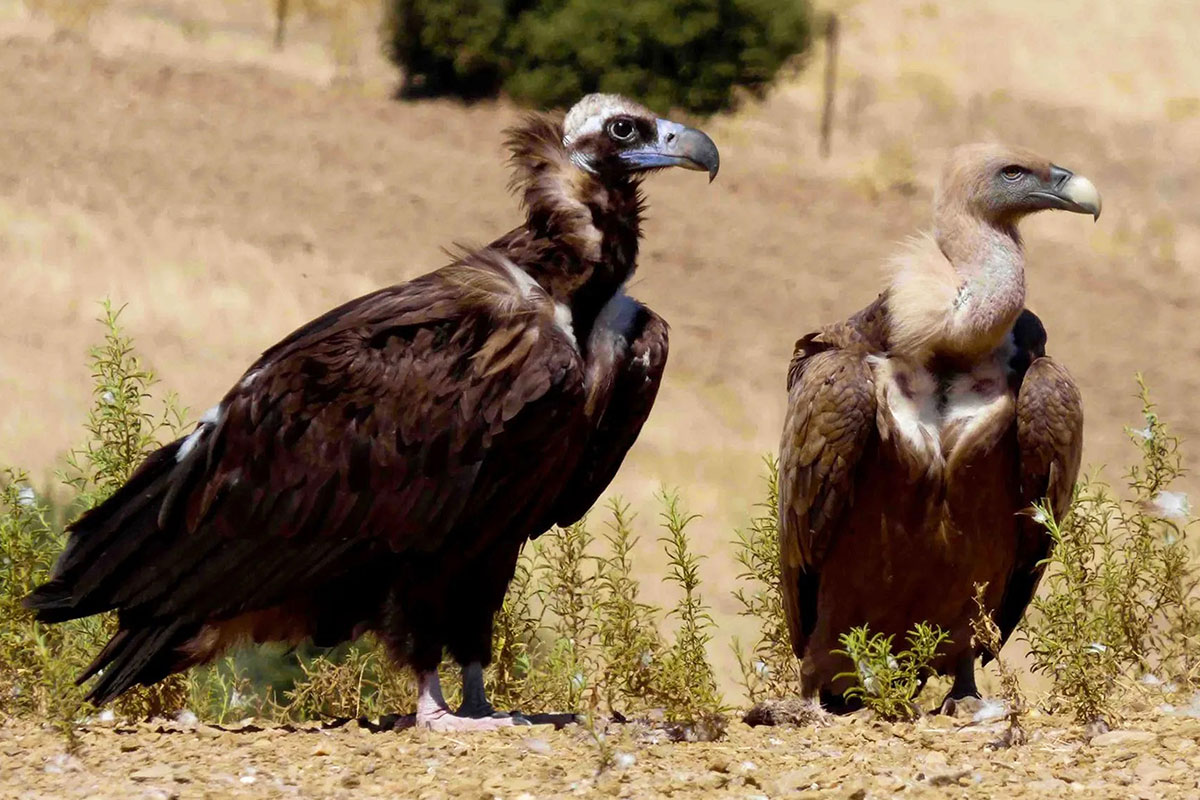The Rich Birdlife of the Ambroz Cáparra
Portada » The Rich Birdlife of the Ambroz Cáparra
The Ambroz-Cáparra region, located in the northern part of the province of Cáceres, features a wide variety of habitats, ranging from the high peaks of the western foothills of the Gredos Mountains to the fertile river plains named after the Ambroz River. Because of these altitudinal variations and the ways in which the land is used, the region has a wide range of ecosystems that support abundant birdlife. More than 250 bird species have been recorded in the region, with at least 190 species regularly present. The area serves as an important feeding and resting place for migratory birds crossing the Central System through the western Iberian Peninsula.
At the highest elevations we find well-preserved examples of oro-Mediterranean habitats, where various species of passerines breed. Among them are regionally rare birds such as the red-backed shrike (Lanius collurio) and the common rock thrush (Monticola saxatilis). The region is also home to several notable birds of prey, including the golden eagle (Aquila chrysaetos) and the peregrine falcon (Falco peregrinus). Descending in altitude, these habitats transition into lush deciduous forests composed of Pyrenean oaks (Quercus pyrenaica), sweet chestnut trees (Castanea sativa), and narrow-leaved ash (Fraxinus angustifolia). These forests provide shelter for a wide array of woodland species, such as the European honey buzzard (Pernis apivorus), the lesser spotted woodpecker (Dryobates minor), and the Eurasian bullfinch (Pyrrhula pyrrhula), to name but a few.
The vast dehesas, made up of centuries-old holm oaks (Quercus ilex) and cork oaks (Quercus suber), cover much of the territory and are home to a rich variety of Mediterranean birds that delight us with a magnificent chorus of sounds in the spring. The acorns from these trees sustain one of Extremadura’s most iconic species, the common crane (Grus grus). These cranes can be seen during the winter months feeding among the trees, on the river plains, or flying to their roosts at sunset near the Gabriel y Galán Reservoir, the geographical heart of the region. In the nearby pine forests, it’s easy to spot Eurasia’s largest bird of prey, the cinereous vulture (Aegypius monachus). Another emblematic inhabitant of the dehesa is the black stork (Ciconia nigra), often seen on the rugged cliffs along the Alagón River and its tributaries. This habitat is also shared with remarkable species like the Eurasian eagle-owl (Bubo bubo) and the smallest of the vultures, the Egyptian vulture (Neophron percnopterus).
In the western part of Ambroz-Cáparra we find vast swaths of traditional olive groves, home to one of the region’s avian treasures: the rufous-tailed scrub robin (Cercotrichas galactotes). This area is home to the northernmost populations of this endangered migratory species on the Iberian Peninsula, which returns to its breeding grounds in May.
The olive groves are often interspersed with other forested areas, creating an ecotone effect where diverse species such as the Eurasian hobby (Falco subbuteo), the western black-eared wheatear (Oenanthe hispanica), and the common redstart (Phoenicurus phoenicurus) can be found. Lastly, it’s important to highlight some of the region’s most notable wetlands for birdlife, such as the Fresnedilla Lagoon and the Las Cumbres Reservoir. These areas host a wide variety of waterbirds, especially during migration periods and the winter months. Visitors can expect to see species like the Eurasian spoonbill (Platalea leucorodia), the great egret (Ardea alba), and the Eurasian wigeon (Mareca penelope), among many others.
Hugo Sánchez Mateos
Idunatours
Visit more posts of the Blog
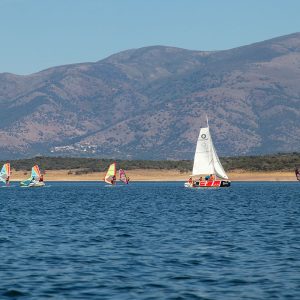
How to Navigate the Reservoirs of Cáceres
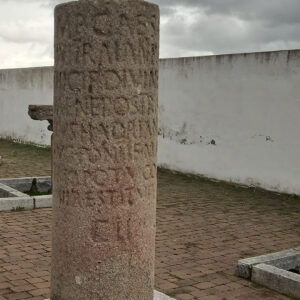
The Vía de la Plata Roman Road through the Caparra Mountains
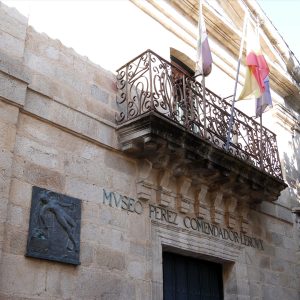
Perez Comendador-Leroux Museum
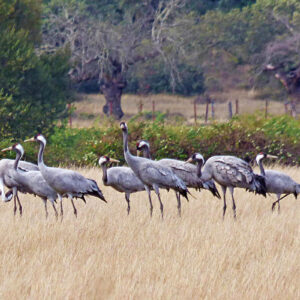
Diverse Birdlife in Ambroz-Cáparra

The Vía de la Plata Roman Road through Ambroz-Cáparra
